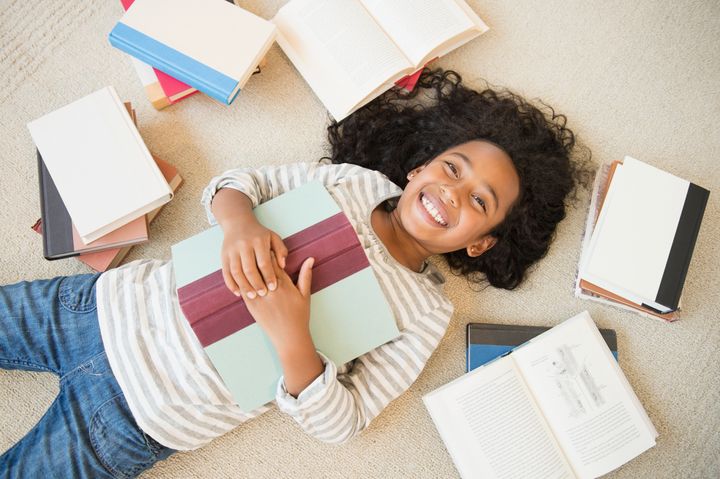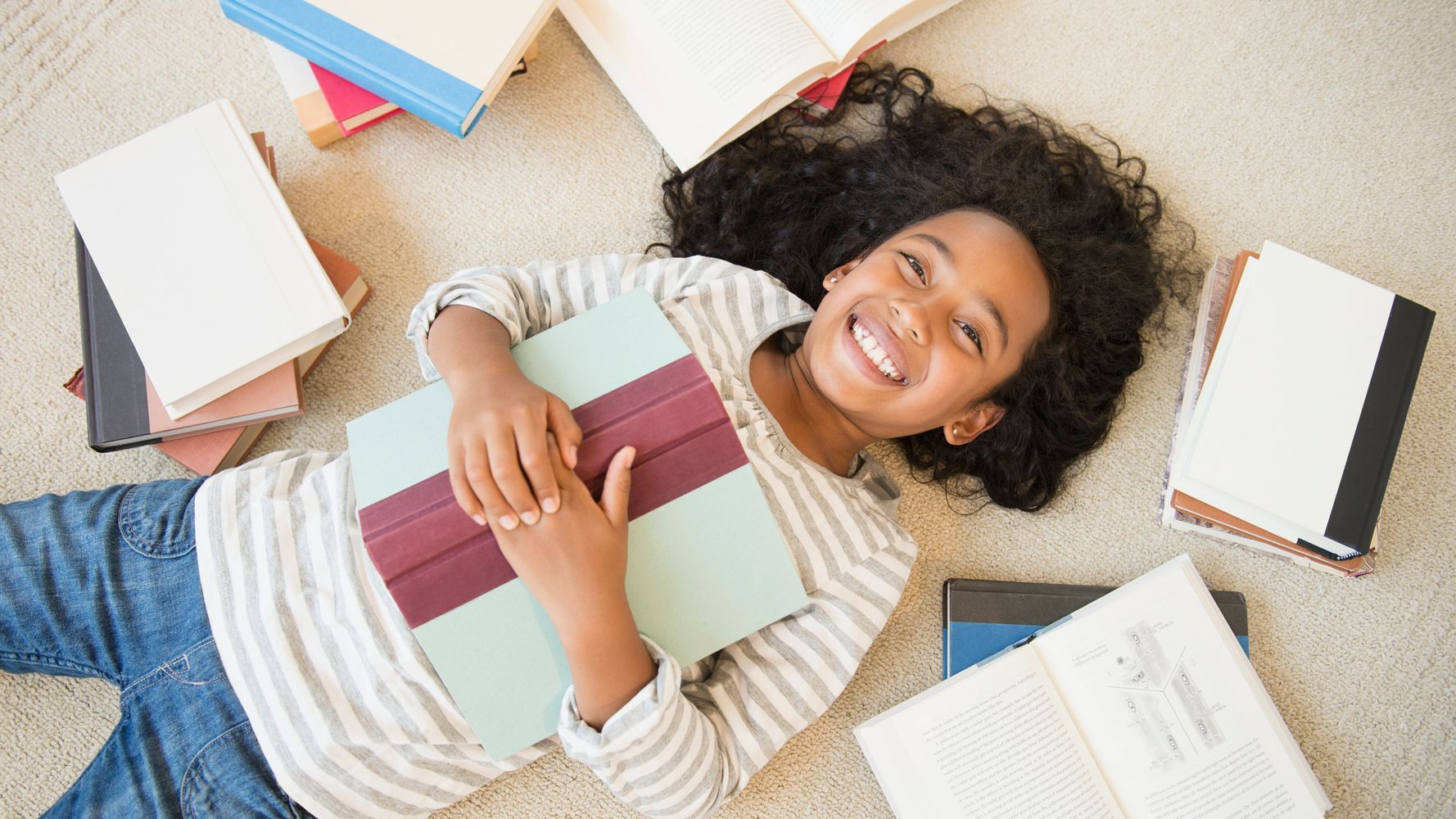[ad_1]
Is it weird that I’m almost 30 and my favorite books are kid’s books?
The first book I read this year was Renee Watson’s 2018 children’s novel “Piecing Me Together.” I picked it up thanks to its beautiful cover and relatively short chapters. But those brief sections of text held a complex story about a young Black girl trying to navigate identity, privilege and history in her hometown of Portland, Oregon, that my adult self found wholly relatable.
Sales of children’s books and young adult, or YA, fiction have boomed in recent years, especially for books that tackle mature subject matter, from gender and sexuality in Alex Gino’s “George,” to the movement for Black lives as featured in Angie Thomas’ “The Hate U Give.” In Jenny Han’s 2014 book “To All The Boys I’ve Loved Before,” kids can learn lessons about love and friendship in the 21st century; in R.J. Palacio’s 2012 book “Wonder,” they can develop language around chronic illness and acceptance; through Tiffany Jackson’s “Monday’s Not Coming,” they can get a better grasp on headline-making stories, such as that of the missing Black and brown girls in Washington, D.C.
Some of the most popular books currently on bookstands are intended for younger readers. There are so many graphic novels, chapter books, picture books and poetry collections written just for kids, all of which teach them important lessons on life that grown-ups will get a kick out of too. While at 28 years old, I’m devouring these titles, sadly the intended audience is barely nibbling on the rich literature available to them.
“We’re still giving kids novels with characters who don’t look like them, who don’t talk like them and who don’t even have internet access and we wonder why they don’t like reading.”
Recent studies show that reading for fun drops drastically for kids between the ages of 8 and 9. According to a Scholastic 2018 reading survey, 57 percent of 8-year-olds say they read for fun; that number drops to 35 percent by the time children are 9. The same downward trend exists for kids who say they love reading; while 40 percent of 8-year-olds said they do, only 28 percent of 9-year-olds said the same.
A love of reading and storytelling sets kids up for socioeconomic success as they grow through life. But if the numbers are to be believed, as kids advance in age, they tend to fall out of love with reading. And who can blame them, really, when what they’re told to read becomes increasingly dense and outdated as they make their way through school? Common Core standards have long been criticized for taking the fun out of English class, as students are given nonfiction and articles to read since that’s the type of content they’ll encounter in college. Just before this school year began, Florida’s Department of Education unveiled their student reading list for Kindergarten through 12th grade. With few exceptions, most of the books on the list were published between 1800 and 1950 and featured mostly white characters penned by mostly white male authors.
Western literary classics (as determined by old white men) and “scholarly” articles have long been the standard for school-aged children. The classics, of course, still have value, but they shouldn’t be the only literary adventures children are given access to in their formative years. We shouldn’t be determining important literature based on what centuries-old scholars tell us is important, but rather on what inspires kids to keep reading and learning. Yet we’re still giving kids novels with characters who don’t look like them, who don’t talk like them and who don’t even have internet access — and they’re told to understand what’s happening and pass a test on it later. And we wonder why they don’t enjoy reading.
“Put some respect on modern children’s, teen and YA books. Within their pages lies the secret to navigating the space between childhood and adulthood.”
Meanwhile, there are entire genres of books dedicated to the unique modern-day experiences, imaginations and problems of young people. YA books and kid lit give children access to the world as it is now and also to the world as it should be: diverse in race, gender and religion, technologically advanced and rich in cultural references and dialogue. And through audiobooks and ebooks, kids have more ways to access these treasure troves if only we encourage them to do so. These modern classic books give a voice to today’s generation and they can teach us adults a lesson or two about where we can make necessary shifts in our value systems.
Maybe it’s not so weird that I still read kids books. Maybe more grown-ups should see the value in modern books created just for today’s children and teens. As it is National Book Month, it’s as good a time as any to put some respect on the children’s, teen and YA sections of your local library or bookstore. Within those pages lies the secret to navigating the space between childhood and adulthood.
If you’re looking for some children’s and teen books to add to your kid’s library, check out some of my favorites:
“Piecing Me Together” by Renee Watson (ages 12 and up)
This book got my reading year off to a great start. It gave me the language to understand microaggressions and inspired me to see the beauty in the world all around me.
“The Girl Who Drank The Moon” by Kelly Barnhill (ages 10 and up)
A delightful tale of magic, witches and a small town where everything isn’t what it seems. This book will show the value in challenging authority, respecting your elders and holding on to what you believe.
“Brown Girl Dreaming” by Jacqueline Woodson (ages 8 and up)
Acclaimed author Jacqueline Woodson shares what it’s like growing up in the Jim Crow era in this book of beautiful poetry.
“Ghost” by Jason Reynolds (ages 8 and up)
Four kids, four stories, one goal: be fast enough to make the Junior Olympics. Readers will speed through this heartwarming tale of triumph through adversity.
“The Boy in the Striped Pajamas” by John Boyne (ages 12 and up)
The young boy in this novel knows nothing about the world of chaos around him. But as he explores his new home in Germany during World War II, he’ll take readers on a journey about tolerance, friendship and tragedy.
“The Breadwinner” by Deborah Ellis (ages 10 and up)
Now a movie of the same name, “The Breadwinner” tells the story of a young girl and her daily antics while trying to survive Taliban rule in Afghanistan.
“Anya’s Ghost” by Vera Brosgol (ages 12 and up)
Anya is being haunted, but it’s not so bad at first. Her ghost companion only wants to help her with school, boys and fashion and prove they can be best friends … forever.

[ad_2]
Source link

